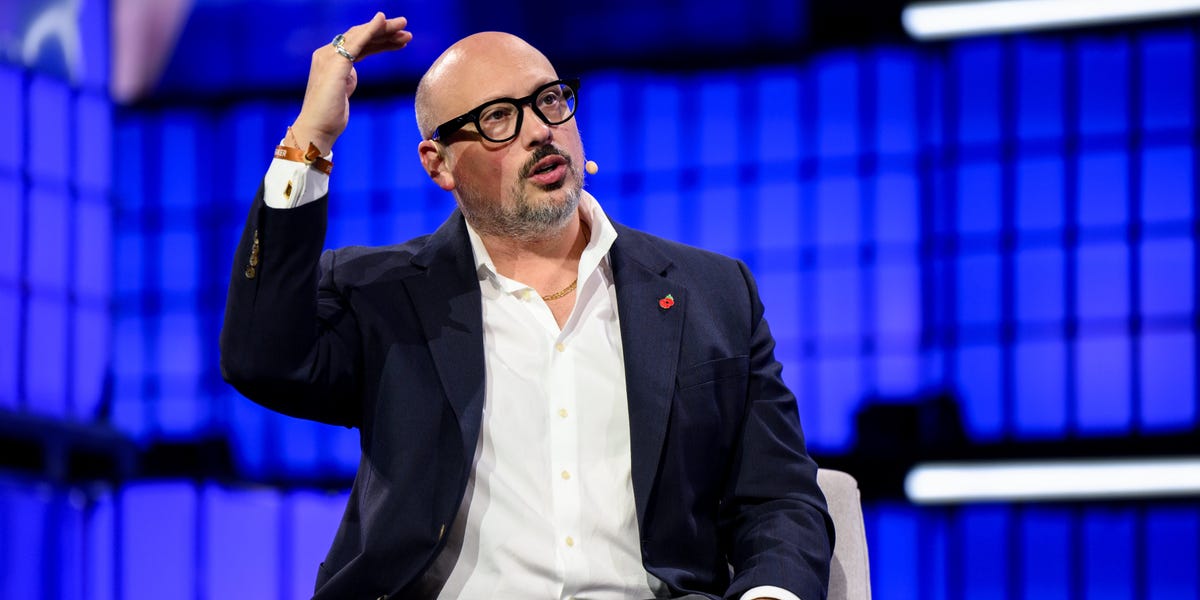Meteoric levels of investment in AI infrastructure have sparked concerns that Big Tech’s latest boom is veering into bubble territory. So, is Meta, along with the rest of Silicon Valley, overspending on AI?
“Clearly no Meta executive would ever answer that question with a ‘yes,’” Alex Schultz, Meta’s CMO and VP of analytics, said in an interview with Business Insider at the Web Summit tech conference in Lisbon this week.
Meta plans to spend up to $72 billion this year on AI infrastructure, and has said spending will climb higher next year. CEO Mark Zuckerberg said this year that he’d rather risk “misspending a couple of hundred billion dollars” than be late to the development of superintelligence. Amazon, Google, Microsoft, and privately held AI companies like OpenAI are logging record-breaking capital expenditures on all things AI. That includes chips and data centers, as well as big salaries to attract and retain top AI research and engineering talent.
There are eyewatering sums of money at play, but Schultz said that, compared to historical bubbles, the current trend is not huge as a percentage of the sector’s market capitalization or revenue. Compared to the US railroad bubble of the late 19th century, “it seems aggressive, but not crazy,” said Schultz of the current AI boom.
In an October research note, Goldman Sachs analysts estimated that AI-related investment in the US is under 1% of GDP, compared with the 2% to 5% of GDP reached during earlier technology booms, including the railroad expansion.
Schultz said Meta’s AI investments are already translating into billions of dollars in revenue for the company, as they improve its advertising tools and content ranking algorithms. Meta is expected to ring in around $200 billion in revenue this year and is trading at a market cap of about $1.5 trillion.
Schultz said the biggest AI-powered revolution for Meta has been its more sophisticated content recommendation system. He said this was necessary because the majority of time spent on Facebook and Instagram now is people looking at “unconnected content” — content that isn’t from a friend, or from a page or group you actively follow.
“If we hadn’t made that pivot, how much smaller would we be as a company today?” Schultz said. “We managed a massive disruption without becoming irrelevant, and it is incremental to our business.”
Schultz said the Meta AI app’s newly released Vibes feed — a feed of short-form, purely AI-generated video content — represents “probably a large chunk of the future” for the company and has demonstrated “good retention” of users so far once they use it. (Vibes has been panned by many online as “AI slop.”)
Video-generation models require more computing power than text or image ones, creating huge energy demands that have the potential to strain power grids and water supplies. The popularity of apps like OpenAI’s Sora has sparked questions about whether the entertainment value is worth it for the environmental trade-offs.
“Vibes isn’t that big — it’s not draining lakes or using multiple nuclear power stations,” Schultz said. He added that it’s one of many experiments the company is working on to train and learn from its AI models.
“There’s sort of this Western European Calvinist streak to society that’s like, doing nice things that are fun is not what life’s about,” Schultz said. “And life is about doing nice things that are fun, and we do all the other stuff so that we can do nice things that are fun.”
The AI wave has prompted what Schultz described as productive conversations about the safety of nuclear power stations and the use of desalination plants to produce freshwater from seawater.
“In general, humanity has the ability to have a lot more abundance than it does,” Schultz said.
